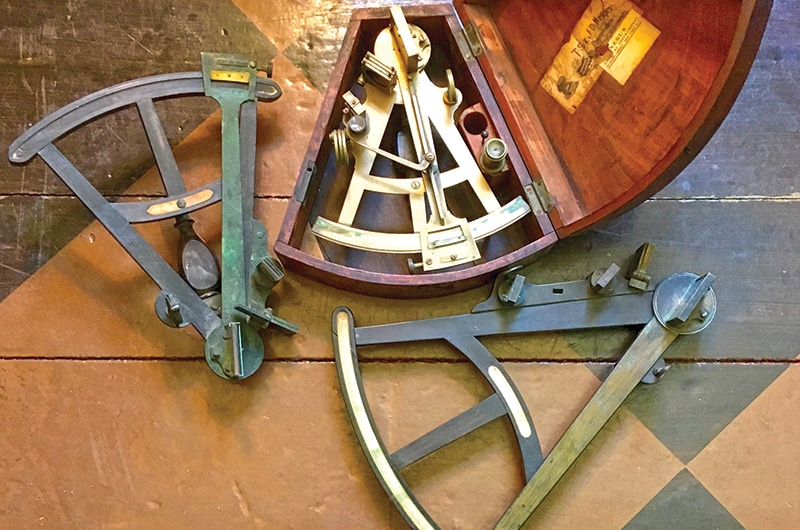
Technically, these are “doubly reflecting navigation instruments used to measure the angle between any two visible objects,” typically the angle between the horizon and the sun (during the day) or the North Star (during the night), or between two celestial bodies: those readings, coupled with trigonometric tables and an accurate chronometer, enables the sailor to calculate their longitude and latitude anywhere in the world. First imagined by Isaac Newton, the first working quadrant was presented to the Royal Navy by Edmond Halley in 1692. Several refinements were independently invented around 1730, leading to the modern instruments.
The difference between the three? Quite simply, the Quadrant has a calibrated scale based on a quarter of a circle or 90 degrees, the Octant is based on one eighth of a circle (45 degrees), while the Sextant is scaled to one sixth (60 degrees). What could be simpler? Just try using one!
Antiques Snippets are provided by Jack Fritsch, proprietor of the Antiques Depot at 2 S. Beach Street (across from the Nantucket Yacht Club) NantucketAntiquesDepot.com